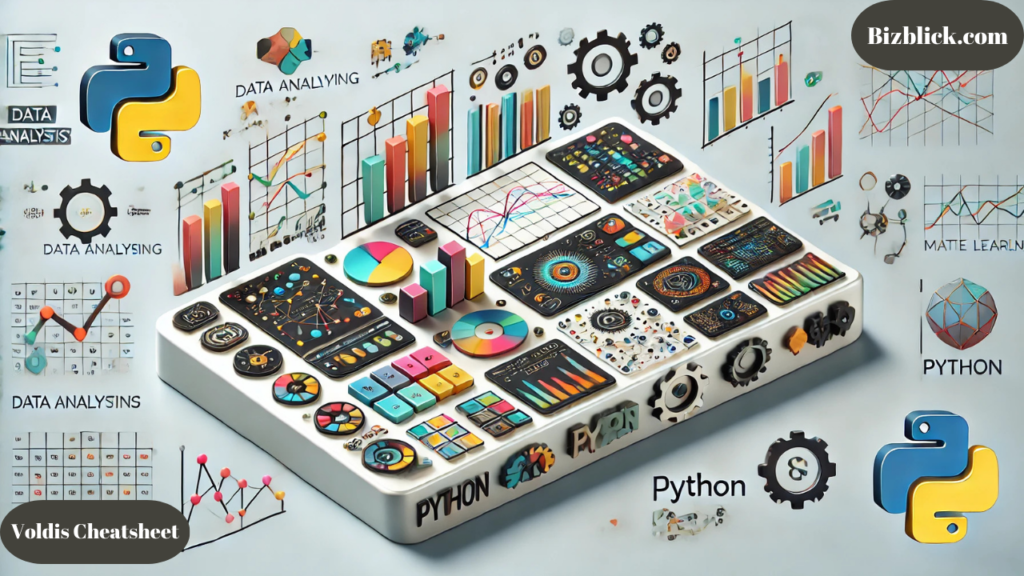In today’s fast-paced digital world, leveraging data effectively can be the key to success in any field. The Voldis Cheatsheet is a comprehensive guide designed to simplify the process of working with data, helping professionals make the most of modern analytical tools and techniques. Whether you’re a data analyst, business strategist, or simply someone keen on optimizing your data workflow, the Voldis Cheatsheet serves as an essential resource. Let’s delve deeper into this indispensable guide and its multifaceted approach to data mastery.
What is the Voldis Cheatsheet?
The Voldis Cheatsheet is a curated compilation of critical data concepts, techniques, and best practices. It provides quick and easy access to complex methodologies, making it an ideal reference for professionals who need to solve data problems efficiently. The cheatsheet covers areas such as:
- Data Cleaning: Tips for handling missing values, removing duplicates, and formatting inconsistencies.
- Data Visualization: Guidelines for creating impactful charts and graphs.
- Statistical Analysis: Key formulas and interpretation techniques.
- Machine Learning Basics: Simplified steps for implementing predictive models.
Each section of the Voldis Cheatsheet is crafted to provide actionable insights, empowering users to navigate the intricacies of data analysis with confidence.
Key Features of the Voldis Cheatsheet
1. Streamlined Data Cleaning Tips
One of the most time-consuming aspects of data work is cleaning raw datasets. The Voldis Cheatsheet simplifies this process by:
- Highlighting common errors like null values and incorrect data types.
- Providing a step-by-step approach to standardize data.
- Offering Python and SQL code snippets for automation.
For instance, a simple Python script to handle missing values might look like this:
import pandas as pd
# Filling missing values
data['column_name'].fillna(method='ffill', inplace=True)These practical tips help save time and ensure data integrity.
2. Creating Impactful Data Visualizations
Visualization plays a crucial role in communicating data insights effectively. The Voldis Cheatsheet offers guidance on:
- Selecting the right type of chart for your data.
- Using tools like Tableau, Power BI, and Matplotlib.
- Applying principles of visual hierarchy and color theory to enhance clarity.
A golden rule included in the cheatsheet is to always match your visualization to your audience. For example, use bar charts for comparisons, line charts for trends, and pie charts for proportions.
3. Core Statistical Concepts Simplified
Statistics form the backbone of data analysis. The Voldis Cheatsheet includes:
- Key measures like mean, median, mode, and standard deviation.
- Probability distributions and their applications.
- Hypothesis testing frameworks, such as t-tests and chi-square tests.
Having these concepts laid out succinctly makes it easier for users to conduct analyses without diving into lengthy textbooks.
4. Introduction to Machine Learning
For those venturing into the world of machine learning, the Voldis Cheatsheet offers:
- An overview of supervised and unsupervised learning.
- A quick-start guide for building regression and classification models.
- Best practices for model evaluation, including accuracy, precision, and recall.
A beginner-friendly example of building a linear regression model in Python is included:
from sklearn.linear_model import LinearRegression
model = LinearRegression()
model.fit(X_train, y_train)These insights enable users to transition from traditional analysis to advanced machine learning techniques seamlessly.
Practical Use Cases for the Voldis Cheatsheet
Business Analytics
Business analysts can use the Voldis Cheatsheet to:
- Optimize data reporting processes.
- Build predictive models to forecast sales.
- Generate compelling visualizations for stakeholders.
Academic Research
Researchers can benefit from the cheatsheet by:
- Simplifying statistical testing for experiments.
- Streamlining data cleaning processes.
- Quickly referencing statistical formulas.
Personal Projects
For hobbyists and enthusiasts, the Voldis Cheatsheet provides:
- A gateway to understanding data analysis.
- Tools to analyze personal data, such as fitness metrics or budget tracking.
Why Choose the Voldis Cheatsheet?
Comprehensive Yet Concise
The Voldis Cheatsheet combines depth with brevity, ensuring users have access to critical information without feeling overwhelmed. It acts as a one-stop solution for tackling various data-related challenges.
User-Friendly Format
Designed for quick reference, the cheatsheet includes visual examples, coding snippets, and step-by-step instructions. Its intuitive layout ensures that users of all skill levels can navigate it with ease.
Time-Saving Resource
By consolidating best practices and shortcuts, the Voldis Cheatsheet minimizes the time spent on trial and error. This efficiency boost allows professionals to focus on generating insights rather than wrestling with technical hurdles.
Tips for Maximizing the Use of the Voldis Cheatsheet
- Keep It Handy: Print a physical copy or save it as a digital document for easy access.
- Customize for Your Needs: Annotate the cheatsheet with notes relevant to your specific projects.
- Combine with Tools: Pair the cheatsheet with software like Python, R, or Excel to enhance your workflow.
Conclusion
The Voldis Cheatsheet is more than just a reference guide—it’s a tool for empowerment. By breaking down complex data workflows into manageable steps, it enables users to harness the full potential of their data. Whether you’re analyzing trends, building predictive models, or crafting compelling visuals, the Voldis Cheatsheet is your go-to companion for success in the data-driven world.
